Automatic Fish Feeder - Part 3
Construction
The physical construction was surprisingly easy. I tried to use cheap, expendable things lying around my apartment.
The bracket is a cutting board from Ikea. I cut a small rectangle of the board off the bottom, and I cut a small piece out of the middle of the handle. The rectangle was hot glued in place where the handle was, creating a food ramp as well as a lip that I could hang the feeder on the aquarium. I cut a hole for the motor axle.
The food container is made of two parts. I cut a small circle out of some dense green foam from a craft store. It's the kind of foam that people normal stick fake flowers in. Then, I glued a piece of paper around it to form a cylinder. I coated the inside surface of the foam with puzzle glue. This dries very smooth. I thought that it would help reduce the huge amount to friction the foam created which would hold the food rather than letting it slide out.
Then, I mounted the motor. To attach the food container, I marked the center of the contained and pushed in onto the motor. For extra strength, I then pulled off the container, added some glue, and reseated the container. I clamped everything upside-down and let it sit for a day to dry. This was to prevent any chance of any glue dripping into the motor, ruining it.
I cut a small hole near the base of the cylinder. This is where the food will be dispensed. Since I use flake food, I tried to make the hole wide and narrow. Otherwise, larger flakes would block the rest of the food.
To prevent any chance of metal screws touching the aquarium's glass, I fastened the PCB to the bracket with a length of twist tie. I get it in spools of 100 feet at the local $1 store.
Here are a few pictures of the completed feeder.
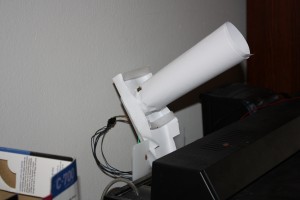
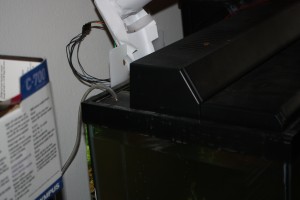
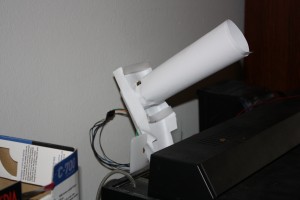
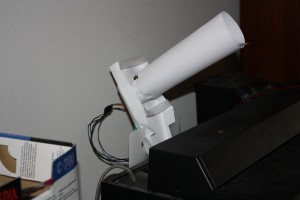
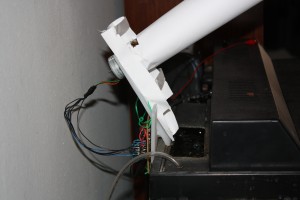
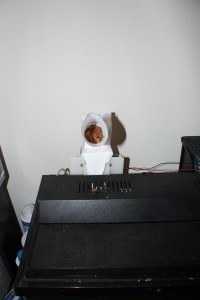
Modifications
When I adjusted the speed of the cylinder's rotation, it spun so fast that fish flakes flew everywhere. The problem was that if I set it to go any slower, too much food would fall into the tank. I put a piece of paper flat on the ramp and bent up its sides. This caught the food as it flew and funneled it into the tank. I held the shape of the paper in place with a piece of scotch tape. I also used scotch tape to adjust the size of the hole in the cylinder.
